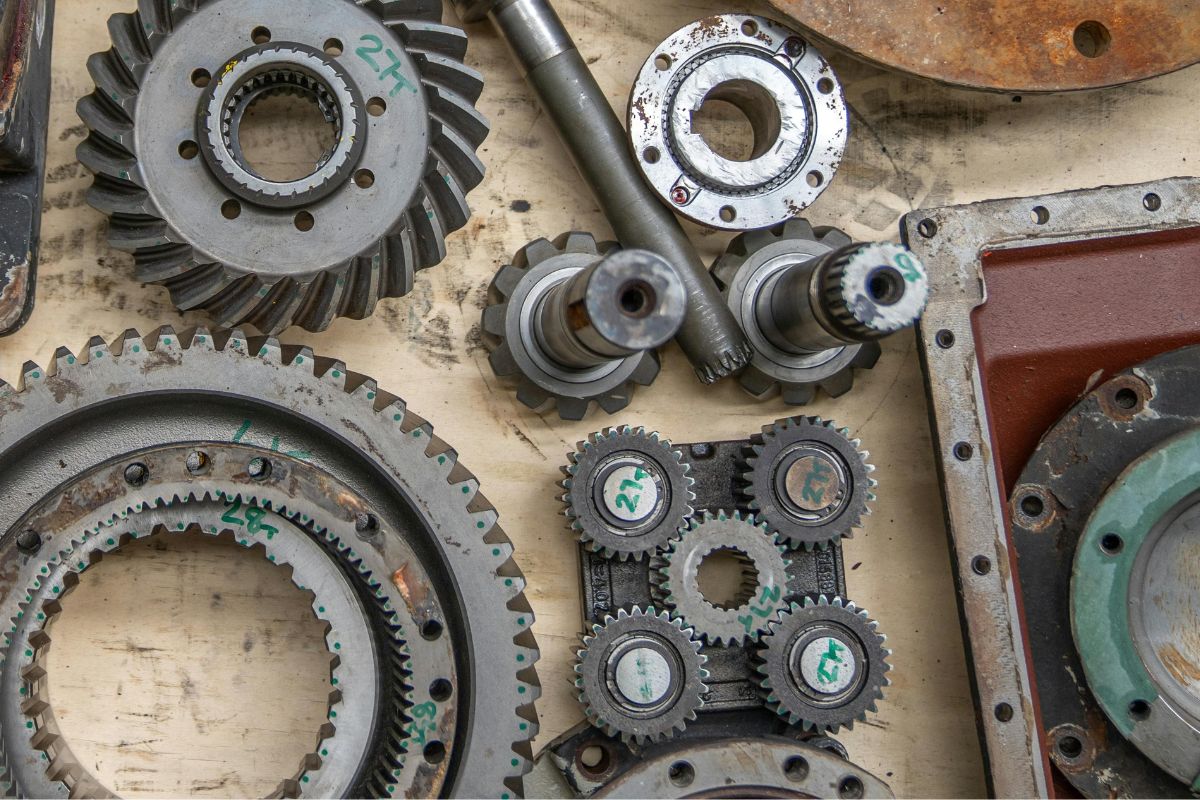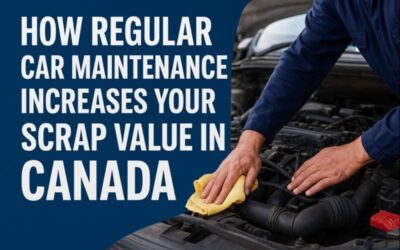Introduction
Owning a car means keeping up with maintenance and replacing parts that wear out over time. Every component has a specific lifespan influenced by driving habits, maintenance routines, and environmental conditions.
Knowing how long your vehicle’s parts typically last helps you budget for repairs, avoid sudden breakdowns, and decide whether it’s worth keeping the car on the road or selling it to a licensed scrapyard.
In this guide, we’ll cover the average lifespan of common car parts, warning signs they’re wearing out, maintenance tips to extend their life, and how auto recyclers give these components a second life once your car reaches the end of the road.
Durability of Engine Oil and Oil Filters
Engine oil keeps moving parts lubricated, reduces friction, and carries away excess heat. As oil is used, it loses viscosity and collects contaminants, which diminishes its effectiveness. Most late-model vehicles, especially with synthetic oil, can go from 8,000 to 12,000 kilometres between oil changes. Older vehicles and lease agreements often require more frequent oil changes, sometimes every 5,000 to 7,000 kilometres.
Change the oil filter at the same time as the oil change, since it traps dirt and debris and is an important part of the oil system. Driving in heavy stop-and-go traffic, extreme weather, or dusty conditions can all shorten oil life. Failing to change oil promptly could lead to engine wear, reduced fuel economy, or total engine failure.
Battery Life
A typical automotive battery powers the starter motor, lights, and electronics of your vehicle. The average battery life is generally 3 to 5 years, depending on how you use it and what climate you live in. Extreme heat increases the evaporation of fluids in your battery; extreme cold slows chemical reactions in your battery, making it harder to start your vehicle.
Short, frequent trips that don’t allow the alternator enough time to recharge the battery can also reduce battery life. If your headlights become dim, your engine cranks slowly, or the electronics behave erratically, then your battery may be coming to the end of its useful life. Regular checking of the battery and cleaning the battery terminals could extend its life.
Lifespan of Brake Pads and Rotors
If your brake rotors are badly worn, suspension parts are failing, and other components are near the end of their life, repairs may cost more than the vehicle is worth. In such cases, a reputable scrap yard can recover working parts, recycle metals, and give you cash for your old vehicle.
City driving and frequent stops wear brake pads out more quickly than highway driving. Brake pads and rotors wear out faster if you drive aggressively, carry heavy loads, or use poor-quality parts. It may be time to replace your brake pads or shoes if you notice squealing noises, vibration, or if you are not able to stop quickly enough. Regular inspection of brake pads or shoes can prevent damage to rotors, which are more expensive to replace.
Tire Life
Tires carry the weight of the vehicle, absorb shocks, and provide traction. A typical tire lasts between 30,000 km and 50,000 km, but can be affected by a multitude of factors such as type of driving, road conditions, and tire quality. Tires that are under-inflated or over-inflated wear unevenly and fail prematurely.
Wheel misalignment and aggressive driving can shorten tire life significantly. Watch tire tread depth and replace tires when they reach 1.6mm. Rotate tires every 8,000km to 10,000km to promote even tire wear.
Also Read: How Much Do Car Scrapyards Pay For Used Cars That Still Run?
Alternator Life Expectancy
-
- Average Lifespan: 7–10 years or 150,000–240,000 km.
- Factors That Shorten Life: Extreme temperatures, fluid leaks, and overloading the electrical system.
- Warning Signs: Dim headlights, dashboard battery light, or unusual noises.
- Maintenance Tip: Have your electrical system inspected during routine servicing to catch early issues.
Spark Plugs Lifespan
Spark plugs create the spark that ignites the air-fuel mixture in the combustion chamber. Standard copper plugs typically last about 30,000 kilometres, while platinum and iridium are good for around 100,000 kilometres.
Worn plugs can create poor fuel mileage, rough idling, and slow acceleration. In extreme cases, worn plugs can result in damage to ignition coils. The renewal of the plugs at the manufacturer’s recommended interval translates to better performance and reduced emissions.
Life Expectancy of Suspension Parts
Suspension parts, such as shocks, struts, and control arms, help absorb bumps and maintain balance. Shocks and struts typically last 80,000 to 100,000 kilometres; however, driving on rough roads or hauling heavy loads can reduce their lifespan.
Worn suspension parts can cause uneven tire wear, poor handling, and an increased stopping distance. It is recommended to regularly inspect suspension components, especially after driving on rough areas. This helps you avoid expensive repairs and keeps your ride smooth.
Timing Belt or Chain Lifespan
The timing belt or chain coordinates the camshaft and crankshaft of the engine. A typical timing belt can last from 90,000 to 160,000 kilometres and should be changed before it’s too late to prevent major engine damage. In contrast, timing chains are built to last longer, even 200,000 kilometres plus, and although they typically won’t stretch or fail, they still can.
Common symptoms of timing belt or chain issues include ticking noises, hard starts, and engine misfires. Following the replacement schedule is essential.
Exhaust System Life Expectancy
The exhaust system reduces engine noise and directs harmful gases away from the cabin and occupants. The muffler and catalytic converter will have different life expectancies. Mufflers can have a lifespan of 5 to 7 years, while catalytic converters can exceed 10 years of life if the engine is appropriately maintained.
Rust, road salt, and short trips that prevent the exhaust from fully heating up can shorten its lifespan. If you hear unusual noises or smells of exhaust gas inside the car cabin, it may be time for an inspection.
Also Read: The Scrap Car Glossary: Key Terms You Should Know
The lifespan of air filters
Air filters help protect your engine by capturing dust and debris drawn in with incoming air. Most need to be replaced every 20,000 to 25,000 kilometres, but dusty conditions may require you to replace them sooner.
A clogged air filter reduces airflow, leading to lower fuel economy and sluggish performance. Remember to check the air filter during your oil change. It will help ensure your engine is breathing as cleanly as possible and performing efficiently.
Final Thoughts
No matter the auto part, everything has a natural service life, and regular inspections and maintenance are critical to keeping your car dependable and safe. If you allow symptoms of wear to go unchecked, you risk further damage to the vehicle, higher repair costs, and even a dangerous vehicle breakdown. For many drivers, knowing the typical lifespan of parts makes it easier to replace components before they fail.
At Greenway Auto Recycling, we offer:
-
- Fast scrap car removal in Ontario
- Top dollar paid for your old vehicle
- Professional dismantling and recycling to recover usable parts and responsibly process the rest
- Help with all paperwork, including cancelling your registration and returning license plates
By choosing to recycle your vehicle, you’ll not only put cash in your pocket but also ensure that valuable materials and components are reused instead of ending up in landfills.





